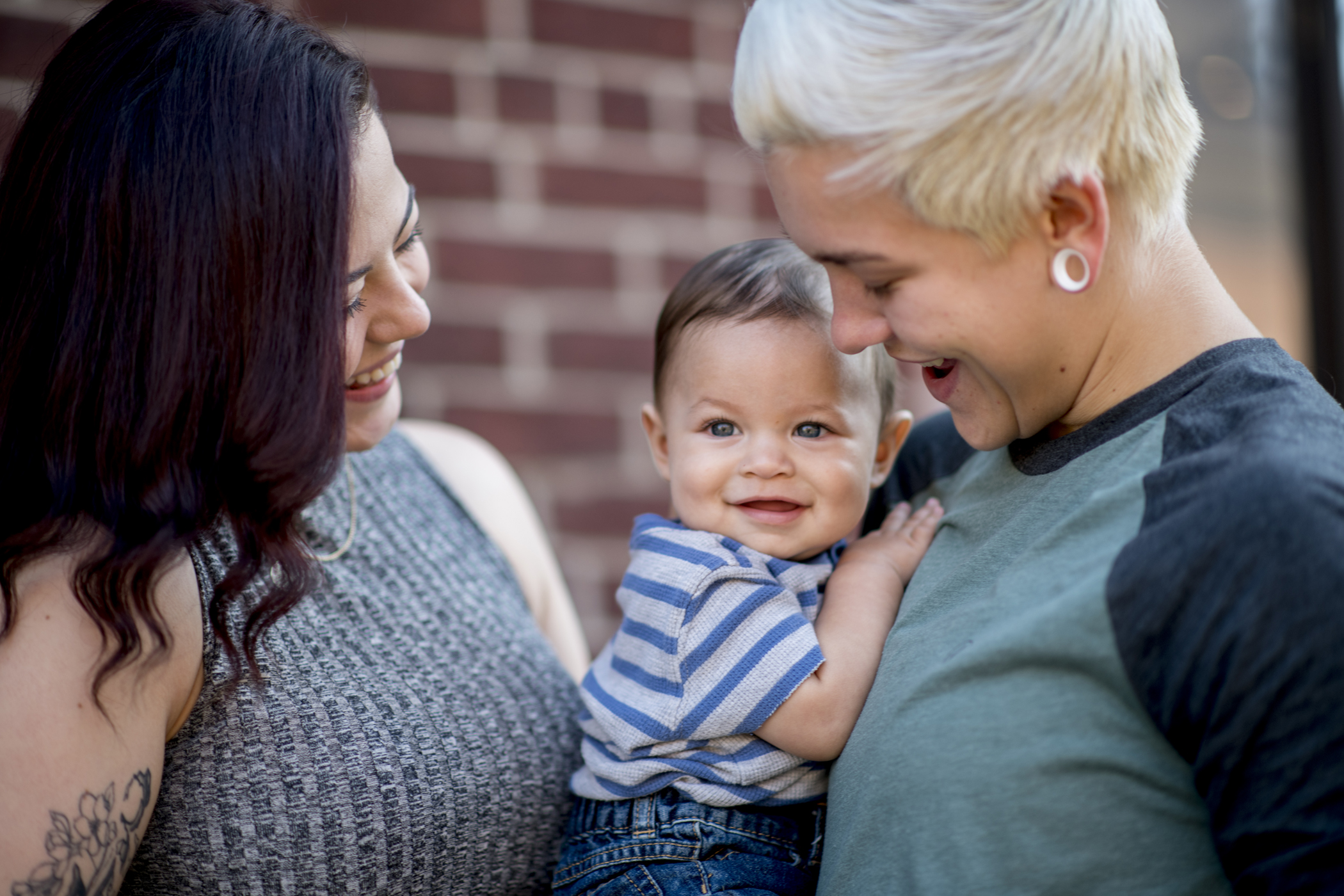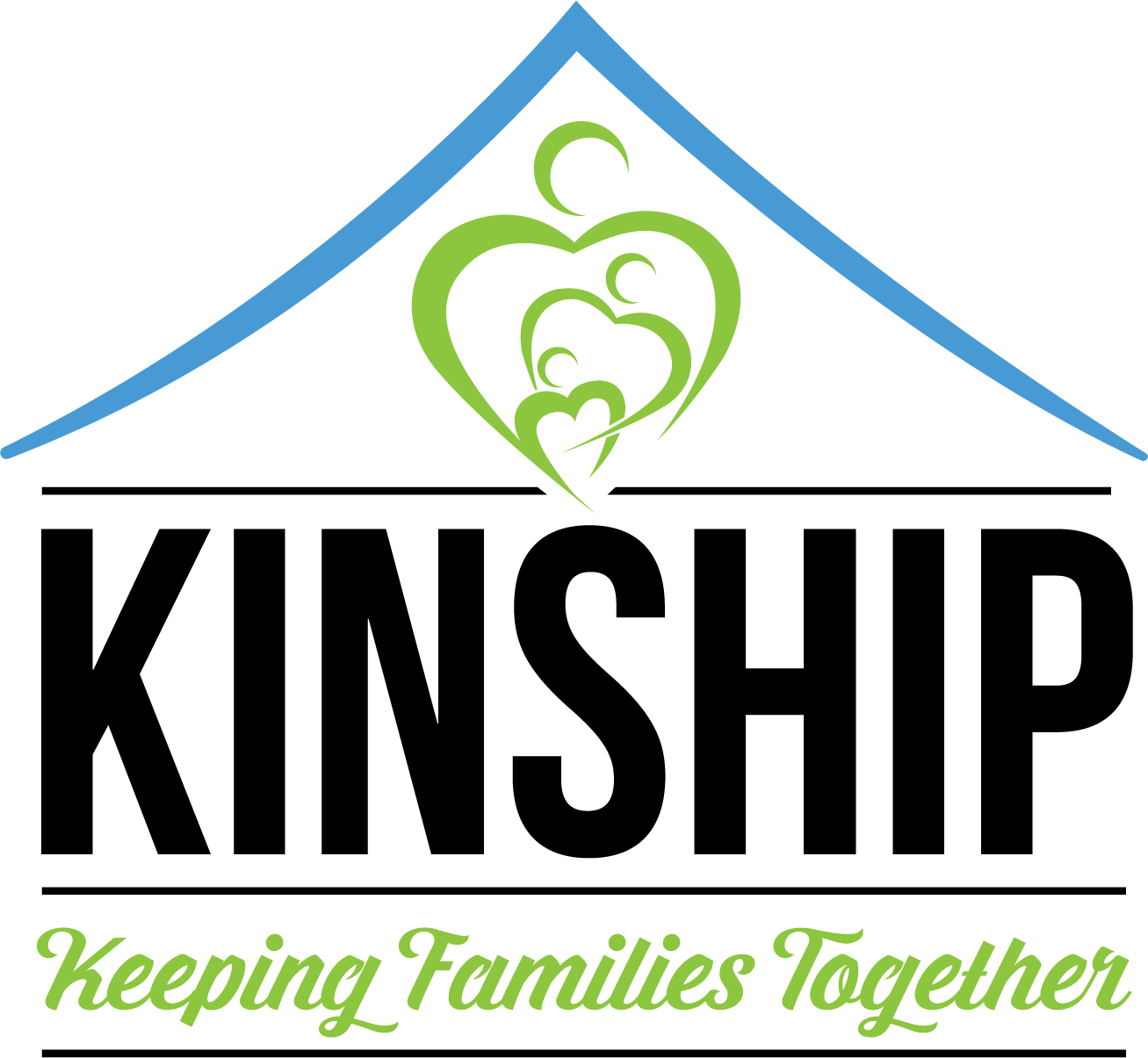| About Kinship | Benefits | Applications/Forms | Volume VII |
What is Kinship Care?
Children are in kinship care when they cannot live with their parents, but live full-time with a relative or any non-relative who has a longstanding relationship with the child or family. Kinship care is the most desirable living arrangement for children who cannot live with their parents. It helps children preserve a sense of family and belonging. It can help children identify with their family’s culture and traditions. When a child cannot live with his or her parents, relatives often take over the full-time responsibility of caring for that child. This is called kinship care, also known as “relative care." Relative care can be temporary, meaning the child eventually return to their parent's care. Relative care can also be permanent, meaning the relatives care for the child until he or she becomes an adult.
Definition of Kin in the State of Colorado
Kin is defined as relatives by blood as well as non-blood kin. Non-blood kin are defined as people who have close relationships with and know the children or families but are not related by blood.
Types of Kinship Care
- An informal agreement between family members or with a non-relative. This arrangement can occur when the Adams County Human Services Department (ACHSD) does not have legal custody of the child/youth and is temporarily involved with a family.
- Non-certified Kinship Caregiver - The caregiver can be granted temporary, legal, and physical custody of a child through the dependent neglect court.
- Certified Kinship Foster Care - The caregiver is a licensed foster parent and is caring for the child/youth. ACHSD has legal and physical custody.
- Kinship Adoption - The biological parents rights are terminated, and the relative caregiver becomes the child’s/youth’s legal parent.
 There are two types of custody:
There are two types of custody:
- Physical Custody – The child/youth lives with you but you have no legal authority to make decisions for the child/youth. You may have input into decisions made but ACHSD is the legal guardian and makes all decisions affecting the child/youth. Children and Family Services will be actively involved with your family and the child/youth.
- Legal Custody or Guardianship – You must go to court, and the court grants legal custody or guardianship. As the legal guardian you have the authority to make most major decisions regarding the child/youth.
Permanency Options
It is important that a kinship caregiver establishes a legal relationship with the child/youth in their care. Having a legal basis for authority to care for the child/youth can provide many benefits. Without it the county department division of child welfare, district of juvenile courts, and even your own family do not recognize legal authority for decision-making. For kinship caregivers, knowing the legal options and choosing the best one for your situation can be stressful, time consuming, and sometimes expensive. Legal arrangements discussed below include legal custody (also known as Allocation of Parental Responsibilities or APR), informal arrangements, Non-Certified Kinship care, Kinship Family Foster Care, Adoption, and a Relative Guardianship Assistance Program.
What is the legal term of custody? In 1999, Colorado changed the legal term “custody” to “parental responsibilities.” Both terms mean the physical care and supervision of the child/youth; including major decisions concerning the child/youth (less than 18 years of age.) The legal custodian has the right to care, custody, and control of a child/youth; the duty to provide food, clothing, shelter, ordinary medical care, education, and discipline for a child/youth; and in an emergency, to authorize surgery or other extraordinary care. Legal custody may be removed from a parent only by court action in district court. Physical custody refers to an informal situation where a caregiver is raising child/youth without the legal authority by the court.
Do I need the consent of the child’s/youths’ parents to get legal custody also known as Allocation of Parental Responsibilities (APR?) Not necessarily. Before a relationship can be legally established, the child/youth’s parents must be given a reasonable opportunity to respond to or oppose the new legal relationship that the kinship caregiver is proposing to the court. Below is a list of different situations where custody can be ordered through APR:
- A contested custody case results when a parent challenges a caregiver’s request for legal custody.
- Consent custody takes place when a parent agrees to give the kinship caregiver legal custody.
APR may be initiated during a Dependency and Neglect (D&N) case filed by the county department, in order for a child/youth to achieve permanency. If a parent does not follow through with their treatment plan and the child/youth cannot be safely returned to the parental home, the county department may recommend at times, with the agreement of the caregiver, that the court award APR to a kinship caregiver. In these situations, APR documents will be filed in district court.
What are the advantages and disadvantages of APR? APR provides the legal authority to obtain certain benefits and services for the child/youth in care. It allows custodians to make basic decisions about how the child/youth will be raised, and enables them to protect the child/youth from potentially abusive parents or dangerous situations. Parental rights are not terminated, allowing contact, if appropriate. The court may also order that the children have ongoing visitation and that parents pay child support.
 Are there different options if the child/youth is removed from the home by the county department?
Are there different options if the child/youth is removed from the home by the county department?
Yes. It is generally believed that placement with relative’s helps the child/youth feel more secure and less separated from their family and community. A new law was enacted in June 2009 that requires the county department child welfare Caseworker to contact and notify all adult grandparents and other adult relatives within 30 days of the child/youth’s removal from the parental home of the following:
- The child/youth was removed from the home.
- Options available to the relative to participate in the plan of care for the child/youth.
- Consequences of the choice to not be involved.
- Requirements to become a certified kinship foster parent.
Prospective caregivers have the option to apply to be the kinship family foster care home for the child and must meet all the requirements to be a foster parent. Another option is to apply to be a non-certified kinship caregiver. This does not require families to meet the requirements of becoming a foster parent. A background check is required in all situations if all relative options have been explored and there is no relative who can care for the child/youth, they will be placed in a non-relative family foster home.
What is non-certified kinship care? Non-certified kinship care refers to the process where the county department places the child/youth with the caregiver. A non-certified kinship caregiver can apply for child only TANF/Medicaid in the county they live in. If a child is placed in your home, the county department will need to make sure you can take care of and keep the child/youth safe. The kinship caseworker assigned to you will ask you to complete:
- A Strengths, Sustainability and Permanency Questionnaire (SSPQ). This will be in the Teal Kinship Packet that your intake worker will provide for you. This questionnaire needs to be completed by each kinship parent as soon as possible and returned to your assigned Kinship Caseworker. This questionnaire will assist the caseworker in writing the Strengths, Sustainability and Permanency Assessment (SSPA) about your family and home. A SSPA is a home assessment that determines if placement of a child in the caregiver’s home is safe, appropriate and in the child’s best interest. The kinship caregivers, and everyone living in that home, will be interviewed extensively. The information in this report will also explore the possibility of the children remaining in the caregiver’s home on a short or potentially long-term basis. Fingerprints MUST be completed prior to placement ordered by the court.
- A check of the state automated system (TRAILS) for any child abuse/neglect in Colorado.
- Colorado Court Access Database
 What is certified kinship care? Certified Kinship Care providers are certified foster parents. (The county department of human/social services retains legal custody of the child(ren)/youth and the kinship caregiver meets all requirements for a family foster care home.) Certified relative caregivers must comply with the same requirements as any certified foster parent. Once certified, caregivers are then eligible to receive foster care reimbursement.
What is certified kinship care? Certified Kinship Care providers are certified foster parents. (The county department of human/social services retains legal custody of the child(ren)/youth and the kinship caregiver meets all requirements for a family foster care home.) Certified relative caregivers must comply with the same requirements as any certified foster parent. Once certified, caregivers are then eligible to receive foster care reimbursement.
If I am certified as a foster parent, do I have to provide care to children/youth that are not related to me? No. As a kinship family foster care provider, you may be certified as “child specific,” meaning you are certified to care specifically for that child/youth.
What is foster care recertification? Each year, foster homes are required to be recertified on their anniversary date. This is the date one calendar year from the date of previous certification. That date is listed on our foster care facility agreement and your certificate. Foster care recertification requirements are regulated by the state. The purpose is to ensure quality and safety of our foster homes. About 60 to 90 days prior to your recertification date, your certification worker will send you a letter letting you know what needs to be completed for your home to be recertified along with the forms that need to be completed. Prior to your anniversary (recertification) date, your certification worker will schedule a home visit to complete your recertification. Foster care recertification requirements are regulated by the state. The purpose is to insure quality and safety of our foster homes. About 60 to 90 days prior to your recertification date, your certification worker will send you a letter letting you know what needs to be completed for your home to be recertified along with the forms that need to be completed. Prior to your anniversary (recertification) date, your certification worker will schedule a home visit to complete your recertification.
How do children and youth enter foster care? The purpose of the Child Welfare System is to help preserve the family, assure the safety of children/youth, and facilitate permanency for children/youth. Foster care is a service when a child/youth cannot be safely maintained in the family home. Certified Foster parents receive monthly reimbursement for the care of a child/youth in out of home care. The child/youth is generally insured by Medicaid for medical services. Usually, involvement in the foster care system begins with a call of referral to Child Protective Services, within the county department to report that the child has been abused, neglected, or abandoned by the parents or the guardian. There is an investigation by the county department to assess and evaluate whether the allegations of abuse/neglect are substantiated, and whether the child/youth can remain safely in the home. Removal occurs when the child/youth cannot be safely maintained in the home with a safety plan and services. Only a court can declare that a child/youth should be placed out of home and this decision is made after a judge has had the opportunity to evaluate all the relevant evidence of the investigation. If the judge finds that the child/youth cannot remain safely at home, legal custody of the child/youth is awarded to the county department or other family member. When the county department has legal custody of the child/youth, the preference for the placement is with relatives first, others with a significant relationship to the child/youth and finally other forms of out of home care.
 What are my rights as a certified kinship family? Once a child is court ordered into foster care placement at court hearing, the county department maintains legal custody. Colorado law requires the court to advise birth parents that relatives may be considered as placement resources and requires the parents to identify suitable relatives. The county department has an obligation to locate and engage all grandparents and other adult relatives as possible placement or permanency resources.
What are my rights as a certified kinship family? Once a child is court ordered into foster care placement at court hearing, the county department maintains legal custody. Colorado law requires the court to advise birth parents that relatives may be considered as placement resources and requires the parents to identify suitable relatives. The county department has an obligation to locate and engage all grandparents and other adult relatives as possible placement or permanency resources.
The county department Caseworker and the guardian ad litem (GAL) will have regular involvement with the child/youth. The court will order a treatment plan that may include visitation/parenting time, which the relative caregiver must comply with. The court and/or County Department also approve allowing the child/youth on trips out of state, as well authorize as major medical treatment procedures. Kinship foster parents are intended to be a part of a treatment team. Other parties involved on the treatment team include the county department Caseworker, the therapist, teacher, and other professionals. Kinship foster parents may advocate for a child/youth with the treatment team and the court. As a certified kinship parent, the relative caregiver will receive a monthly reimbursement to support the care of the child/youth. There is a base rate for this type of care.
The child/youth in foster care is usually provided with Medicaid to cover medical, dental, and mental health needs. Recreation activities and mentoring programs may also be available for the child through the county department. If these services are needed, the caregiver may make a request to the Caseworker. Certified kinship parents have the right to receive notice of all court hearings and to be heard in courts. Certified kinship parents also have the right to be invited to periodic six-month reviews conducted by the Administrative Review Division, regarding the progress of the case for the child/youth.






